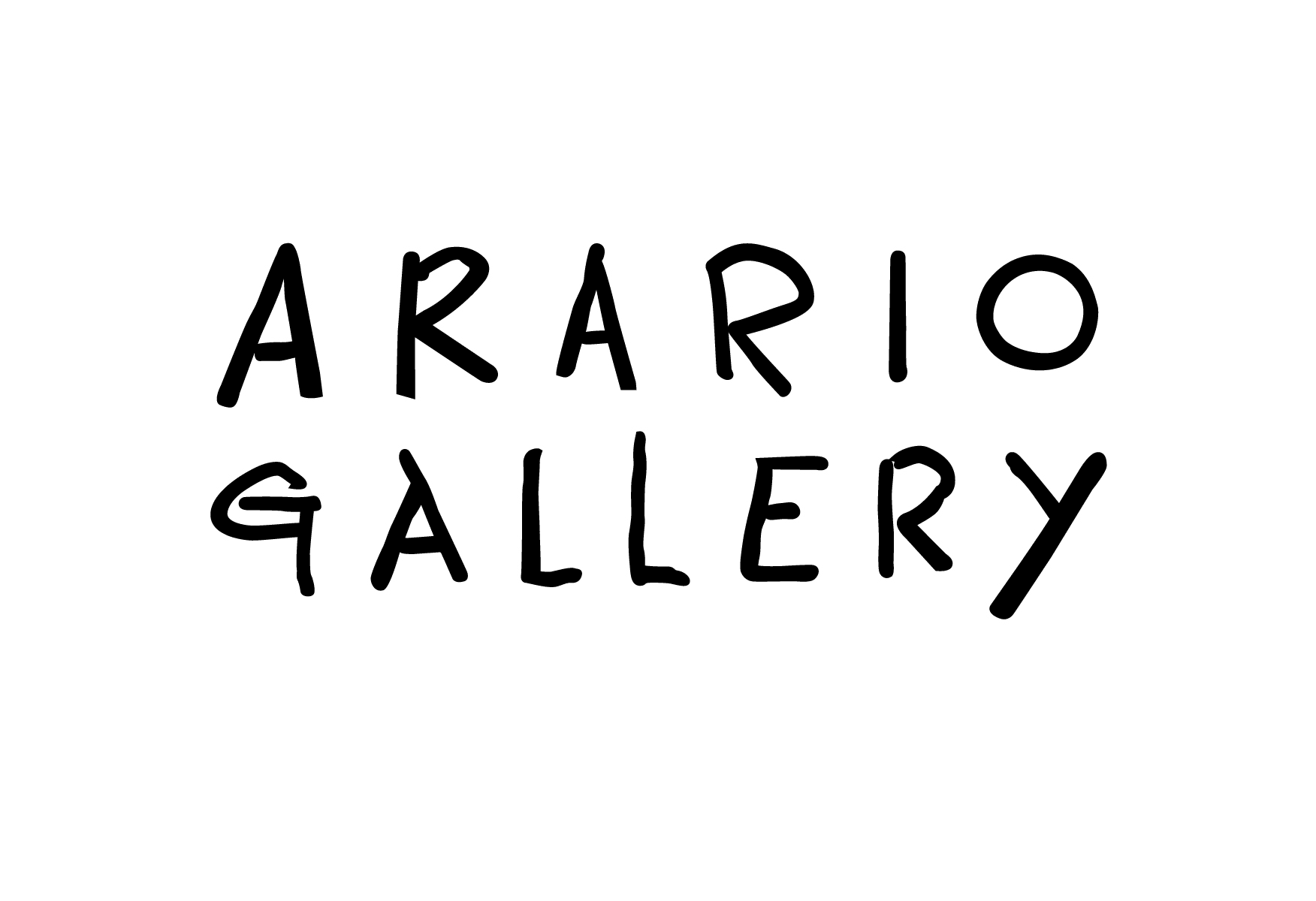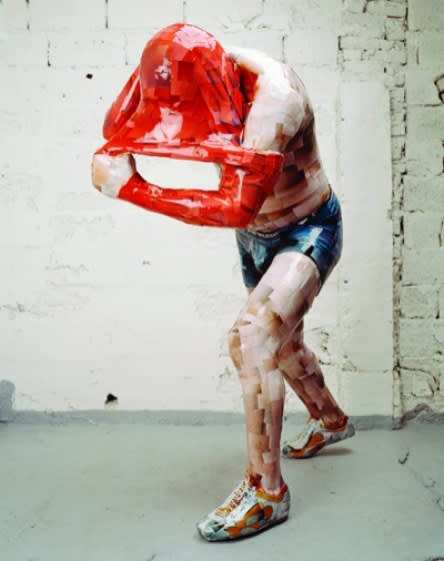GWON Osang
- Period | 3 March– 9 April, 2006
Venue | Arario Gallery Cheonan
Works | 40 pieces including installation, sculpture
Opening Reception | 6pm, 3 March, 2006
Arario will display for the first time a solo- exhibition by a young Asian artist which marks the beginning of its mission to support contemporary Asian art. GWON Osang is one of the leading members of contemporary Korean art who has already been included in shows internationally. In his two-dimensional “Flat” series he reverses this technique by using objects from magazine cutouts and placing them as sculptural props in his large diasec photographs. For this exhibition, he will also unveil his newest series of large sculptures using traditional medium of bronze with contemporary motifs.
Return of the Sculpture
In this period when the ready-made cars come in galleries with the title of artwork, GWON made a supercar in bronze. Here, GWON, an artist who had been doing simple and light works as if he wanted to laugh at the heaviness of sculpture, chose the most traditional way and conservative material that we could think about in sculpture.
Along with painting, sculpture has been the most important genre in eastern and western arts. Even though they sometimes faced the crisis of being deprived of their title of art, painting and sculpture were always in the center of discourses in art switching the positions in the hierarchy. Even in the middle of 20th century when the wall between different genres in art was broken down, and fragmentary appropriation and mixed hybridization were prevalent, there were artists who persisted in the traditional way of sculpture. Even though it was not in the spotlight being pushed out by new values of the period, the very ‘sculpture’ survived. Before GWON Osang presented “The Sculpture” to the public, it was an open secret that he actually was one of the artists who succeeded to the traditional sculpture. In 1998, when GWON Osang presented ‘Deodorant Type’ composing a human body with photograph fragments, people thought that it was a contemporary artwork with very sophisticated sensibilities. Even if GWON announced that he had tried to make a light ‘sculpture,’ ‘Deodorant Type’ seemed to go better with the label of ‘three-dimensional work’ using photography, rather than with the ‘sculpture.’ And 5 years later, when he presented ‘The Flat’ putting photographs in shinning diasec frames, people thought that GWON was really entering the way of ‘photographer.’ However, GWON Osang still insisted that ‘The Flat’ was a sculpture. It really makes a perfect sculpture along with ‘Deodorant Type’ in his logic.
The story of sculptor GWON Osang and sculpture begins with the photography sculpture. GWON Osang was too frail to do the traditional sculpture, trimming stones with chisel and burin, making original form with clay, and casting it in bronze, and he also was too smart to do it in spite of all these hardships. Instead of being suffocated by traditional materials and producing process of sculpture, he searched for appropriate and modern materials which could be used as substitutes. And finally, in photography, he found the link with sculpture along with the contemporary visuality, and its fragmentary property.
From Charle-Pierre Baudelaire’s modern eye to Jean Baudrillard’s simulacre, photography is a medium which has been in the middle of the visual conception ruling the modern city. It contains the will to texidermize a transient moment into eternity, and separates image from reality. It was served as a tool to change the episteme of period. If GWON Osang’s ‘Deodorant Type’ satisfies the obligations of contemporary art depending on the property of photography as a signifier, it appropriates the possibility of transition into sculpture from its reproduction mechanism. On the mechanism of photography and sculpture, he said, “In sculpture, we make original forms and cast them in plaster, which is just like the process of making negatives in film. Moreover, the way we set up the plaster casts and re-make the original form is not different from the printing process of photography. ” Here, he sharply points out that the mechanism of every analog reproductions including photography, after all, cannot choose but appropriate the system of ‘Original-Mold-Reproduction.’ A different approach to the mimesis of photography and sculpture refutes the criticism which insists that the way of representation in ‘Deodorant Type’ is based on the reckless laziness of the sculptor. Admitting that the essential purpose in the starting point of visual arts like sculpture, painting, and photography is the mimesis of nature and object, we could say that it is creative and natural to substitute sculptor’s representation with photographer’s reproduction. Beyond the common areas in technique and meaning between photography and sculpture, what GWON Osang presented through ‘Deodorant Type’ was the possibility of new sculpture keeping the pace with the times.
Pioneering a genre of photography sculpture in ‘Deodorant Type,’ GWON Osang challenges a new one called still-life sculpture in ‘The Flat.’ Now, he calls the popular items in magazine such as watches, jewelries, cosmetics, shoes, purses as objects of sculpture. Considering the number of times these items are appearing in magazines, they are the icons of today’s consumer culture. With these items, GWON Osang condenses the process of sculpture into the simplest one. While he replaces the heaviness of sculpture with lightness, the volume and density with fragility in photography sculpture, now in ‘The Flat,’ he replaces the complexity in the process of sculpture with simplicity. Cutting out pictures from magazines, and supporting them with iron wires from the back, GWON Osang puts flat sheets of paper in the three-dimensional spaces to stand alone and grants them the status of sculpture.
Here, the more interesting thing is that he ultimately shows us these simple sculptures in the photo plane. He even insists that these final photos are also ‘sculptures,’ which requires more complicated logical reasoning about the property of sculpture than in the case of ‘Deodorant Type’ where he tries to put it into the area of sculpture. ‘Three-dimensionality,’ one of the most important properties in sculpture, is based on the fact that objects that a work tries to represent are three-dimensional. Even if each sculptures that GWON Osang called for ‘The Flat’ came in the three-dimensional spaces, they are still flat in essence, and so spectators would see them in the right way only when they could be in the front side. Human eyes, however, cannot see this right front side because they also watch the sides and imagine the back considering the spaces. On the other hand, camera lens, the single eye which estimates spaces only with the size, can show us these flat sculptures the way GWON intended. In short, each sculpture could be seen as a perfect sculpture the way artist wants to show us when it is framed by the camera, and then, it could exist as a solid sculpture.
The solid and shinning images of ‘The Flat’ which seem so vivid to our eyes are far away from us covered by various layers of curtain. The objects that they denote are mass produced industrial products whose originals are unknown. After these products are photographed by camera, the films are developed and printed, mass reproduced by magazine, and framed and casted in camera of the artist, then they finally presented to us. However, as any other things of today, these sculptures whose originals are unidentified appear before us more vividly than the originals themselves, and even than the direct object in the magazine advertisements. In ‘The Flat,’ GWON Osang is doing an experiment with the possibility of flat sculpture, and he completes the study on today’s images and on the elements happening between them, beyond the relations between vision and illusion, reality and image.
After the photography sculpture and flat sculpture. In this period when the ready-made cars come in galleries with the title of artwork, GWON Osang made a supercar in bronze. Here, GWON, an artist who had been doing simple and light works as if he wanted to laugh at the heaviness of sculpture, chose the most traditional way and conservative material that we could think about in sculpture. Even though he says that he wanted to show what is sculpture, in front of this huge work, bronze cast of a supercar, ‘Murcielago,’ it is hard to expect the deep impression we could get from Greek sculptures, ‘noble simplicity and calm grandeur’ as J.J. Winckelmann said. However, from this artist who goes better with the cold reason, and in this period of fragmentation and mental dispersion, it might be nonsense to expect the impressive and emotional work. In front of GWON Osang’s new work covering a large space around it thickly painted in dark orange, people would rather feel overwhelmed and embarrassed than emotionally touched and impressed. This is somewhat caused by the density contained in the work of the sculptor who keeps studying on sculpture just like unique color developing effects made only by painters who keep studying on painting, or by the visual shock that we could have facing the sculpture sitting low and wide in a space for the first time. However, the root cause of this embarrassment and overwhelmed feeling is mostly in the more psychological part. This is a feeling close to the shivering we could have when something we desire but never expect to happen in real appears just in front of the eyes and the spirit of an age that we could feel when we face a work of art which, in our thought, should be there.
On ‘The Sculpture,’ GWON Osang said, “In fact, it simply ends with the fact that I made a supercar in bronze.” However, through this short essay, I try to add to his new series a word, “product of ceaseless study on the sculpture which can fit in the new period.” Besides ‘The Sculpture,’ when I look at the new pieces of ‘Deodorant Type,’ and ‘The Flat’ with which he is still working on, I can see that they are denser and harder than ever and find myself stressing their sculpture-ness. Maybe it is partially because I clear up the misunderstandings about artist GWON Osang’s identity. However more than this, it is because GWON’s study which started with having ceaseless questions on sculpture and modernity through photography comes close to the answer to how today’s sculpture could feel more sculptural being worthy of the name and deeply impressive. From GWON Osang’s works, I could feel the period of sculpture arrives. As painting recently led the ‘triumph of painting’ by combining traditional techniques and modern materials, GWON Osang’s works combining the most traditional techniques with the contemporary age step forward towards that(triumph) of sculpture. Return of the sculpture just began.



















